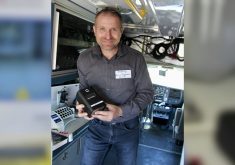The United Nations has declared antimicrobial resistance a global fundamental threat. It is interesting that the emergence of antimicrobial resistance (AMR) has really taken a short time in our human history to become a near epidemic. Today antibiotic use is considered suboptimal and in many cases unnecessary because of the widespread use without the confirmation of culture. It is estimated that in at least 50 per cent of all human cases the prescription is inappropriate because the diagnosis of the specific pathogen is incomplete or in some cases, a guess.
Read Also

A strategic approach to risk on the ranch
Given the increase in the value of livestock and the market volatility, we need to cover our risks. First,…
The use of antibiotics started in our modern history around the year 1911 with Arsphenamine which was found effective for syphilis. Sulfa hit the market in the 1930s and the game changer, penicillin was on the market in the 1940s. Even at that time Fleming warned of overuse and resistance. This played out to be true and in the 1970s and 1980s as 64 new and variances of antibiotics were commercialized. Resistance played out almost immediately. Skipping ahead to our current era and the number of new or variances of antibiotics to hit the market has tumbled to 12 from the year 2000 to 2016.
Pharma does not find the development of antibiotics to be a priority because they are curative and therefore short in the duration of use in North America, but antibiotics are shipped in bulk overseas. In reality, finding specific antibiotics to counter the resistance in the human and animal population today has not been recognized globally even though 60 per cent of animal treatments are medically important to people. This is happening at a time when the WHO claims 700,000 persons are expected to die this year from antimicrobial resistance (400,000 from resistant TB) and the World Bank is taking a serious look at the related economic consequences.
- More ‘Straight from the hip’ with Brenda Schoepp: You know you are an entrepreneur when…
Most recent forecasts are for the loss of life to have a negative impact on global GDP by up to -3.8 per cent. The environmental cost has yet to be determined as there are grey areas in terms of how hospitals and big pharma treat their waste. Soil and water are also consequential victims of the massive use of antibiotics and as those elements are recycled back into our bodies and in those food animals we eat, the opportunity for resistance increases.
The majority of antibiotic use in North America is for production animals and it is here where resistance is also prominent. We may call them chronic or unresponsive in the flock, field or pen. There is a cost for this too and the World Bank is watching as the estimates that livestock production may fall in a range of 2.6 to 7.5 per cent from antimicrobial resistance alone. This could impoverish some agricultural areas. As in human health, there is a call for more training, more use of preventive measures including vaccination and the improvement of hygiene.
As we near crisis levels particularly in respect to treating TB and STDs (particularly gonorrhea) because of antimicrobial resistance, hope has emerged in an entirely different fashion from Australia. Enter Shu Lam, a PhD student at University of Melbourne who has discovered a way to treat bacterial infection with polymers that target bacteria and kill it in a few different ways. The structurally nanoengineered antimicrobial peptide polymers (SNAPP) attack only the infected cell and they disable it, disrupt it or even break it apart. This kind of stress causes the bacteria to turn on itself and it basically self-destructs. Her SNAPP technology has so far proven to be effective on six strains of antibiotic-resistant bacteria.
What this means for the future of human and animal medicine may be profound as we gauge the long-term efficacy of SNAPP across gram-negative and gram-positive pathogens. Rather than poisoning the infected cell and the healthy cells around it, SNAPP only go where needed. And there is no residue from the use of a chemical agent so it has a positive environmental outcome. As we phase out our dependency on antibiotic use in animals in Canada we must also consider the alternatives and find solutions from both the human and food animal side.
Certainly the day has passed to give a prescription for a cold or use food animal drugs off label. But the reality is that some folks still drive about with a bottle of liquid magic on the dash of the pickup and doctors still prescribe before the bacteria is cultured and we lack clarity in how hospitals and pharma dispose of infected waste. The need for rapid diagnostics has never been so profound in human or food animal medicine. As 7.5 out of 100 Canadians suffer with a drug reaction, one can appreciate that the solution must be found outside of experimental antimicrobial use as both resistance and reaction can be fatal.
SNAPP is so attractive because we understand the molecule and know the makeup of it, whereas generic drugs are causing real issues in Canada especially when the ingredients come from exporting countries that do not have the same manufacturing or purity of ingredient controls. As insurance companies put the pressure on health-care providers to use generic names, we risk prescribing to humans and to food animals a generic that could be ineffective or even deadly and most certainly an ineffective drug only perpetuates the AMR issue.
As pharma moves away from investment into new antibiotics and doctors often save those new classes of antibiotic for last resort, we must encourage human and animal research in areas such as SNAPP as it may be a contributor to the end of AMR that is now of epidemic proportions. The economic, health, environmental and humanitarian benefits would be profound. This we do for ourselves, our environment and the generations to follow.
















